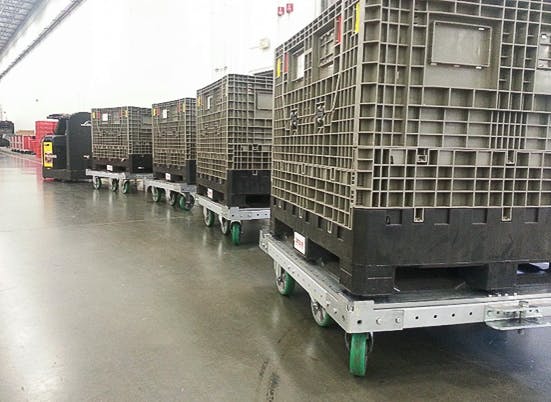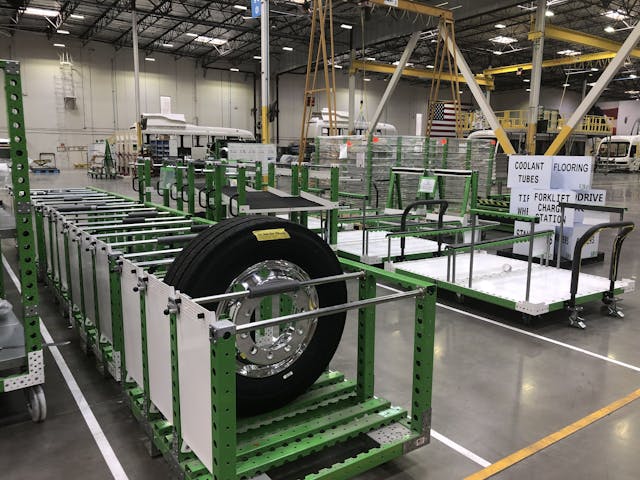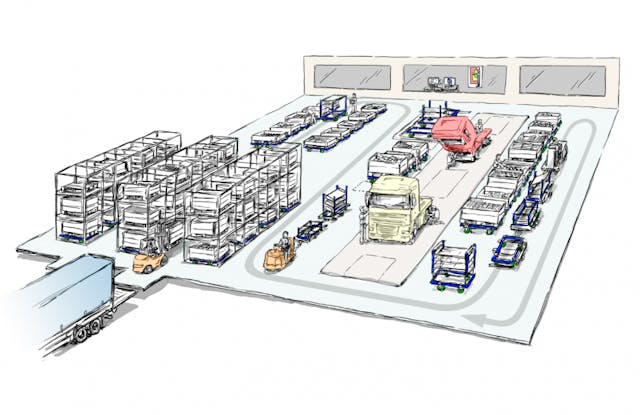5 Timely Tips for Reducing Forklift Traffic

In manufacturing facilities and warehouses, there’s nothing as dangerous as the traditional forklift criss-crossing through a shop floor and the stats are there to prove this. According to the Occupational Safety and Health Administration (OSHA), forklifts have been responsible for approximately 34,000 accidents every year. On the other hand, forklift traffic can also lead to reduced production levels and downtime, which also negatively affect manufacturing. In order to effectively reduce forklift-related accidents and downtime, reducing or eliminating forklift traffic must be a major consideration in every facility. In this post, we provide five timely tips for reducing forklift traffic.
5 Ways to Eliminate Forklift Traffic
Design Traffic Organizing Layouts
If you must use a forklift, then the first tip is organizing your shop floor to accommodate human movement, forklifts, and other items. OSHA recommends the creation of wide pathways for forklifts to navigate and dedicating walkways to handle human traffic. The pathways for forklifts should also be free off stumbling blocks or machinery that can affect movement across the shop floor.
Dedicated walkways for pedestrians are another aspect of creating a layout that must not be overlooked. These walkways keep pedestrians from the path of forklifts which eliminates accidents while also reducing traffic.
Make Use of Forklift Traffic Signs
As we commute daily, the hundreds of traffic signs littering every major road and bus stop plays a crucial role in controlling traffic, reducing accidents, and speeding up daily commute. Forklift traffic signs are also designed to provide these benefits across manufacturing facilities and warehouses. Thus, purchasing these signs and placing them in strategic corners and routes can play an important role in dealing with forklift traffic.
There are different types of traffic signs that provide forklift drivers with timely instructions on when to move or stay. Facility managers can also use these signs to create safe zones for pedestrians, set speed limits, and organize multiple forklifts navigating through a pathway.
Analyzing Your Material Handling System Options
Although forklifts remain the most popular material handling equipment in most shop floors, things are changing. Facility managers are currently spoilt with safer material handling systems to choose from. Examples of these options include; Tugger trains, conveyor belt, and automated guided vehicles.
For example, a Tugger train system consists of a single-vehicle pulling multiple cargo pallets or carts along a path. Tugger trains are much safer than forklifts, and they can be customized to meet your loading and shop layout specifications. The Tugger carts in a Tugger train system can also be further customized to meet your material handling needs.

Address Irresponsible Driving and Horseplay
A forklift or any moving vehicle is only as accurate and punctual as the person driving it. If irresponsible drivers are in charge of the forklift, the possibility of traffic delays around the shop floors and accidents occurring increases exponentially. This is why supervisors are generally tasked with ensuring only responsible drivers take charge of forklifts.
Forklifts are extremely heavy vehicles, and when loaded they become even more unwieldy. Loaded forklifts can prove challenging to experienced drivers therefore, irresponsible or intoxicated drivers must be weeded out of warehouses and manufacturing outfits.
Train Staff About Proper Use and Workplace Safety
Proper training of driving and loading personnel should be part of the internal policy of every manufacturing facility. A forklift working under optimal conditions and driven by an experienced driver is less likely to cause either traffic or accidents. Also, trained personnel will understand forklift traffic signs and adhere to them. OSHA also recommends mandatory training and retraining of forklift drivers as a means of reducing unplanned downtime in factories.
Conclusion
Industry 4.0 has opened the door to automating how we transport materials across shop floors. Options like Tugger trains are currently replacing forklifts across the manufacturing industry. These options are more organized and safer than forklifts. If you are interested in further simplifying your forklift traffic, simply speak to one of our expert technicians to learn how Tugger trains can help.



